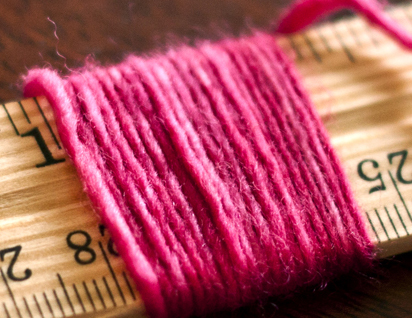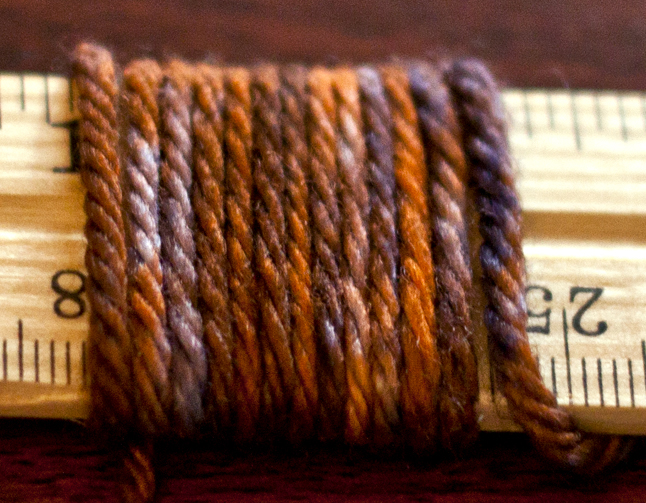Worsted
WPI: 9-11
Ply: 10
Other Names: afghan, aran
The term worsted finds its origins from “worstead”, the name of a village in Norfolk in which yarn and cloth were crafted. The term often causes confusion because of the spinning term worsted (in contrast to woolen). Worsted in regards to spinning means that the yarn is smoothly spun with the fibers prepared in a method that makes them parallel to each other. Woolen can mean anything that does not fit into the worsted category, and the resulting yarns are often much more lofty and fluffy. Neither of these things matters when referencing yarn weight, but they’re important to know for context. Aron (pronounced Aaron) yarns are often considered being thicker than worsted weight yarns. Fiber Hound's Norwegian Elkhound is 13 WPI.
You may have noticed that a couple of the yarns are also known as “baby”. I have not yet discovered the origins of this, but I suspect the designation is an attempt to point customers into the idea of “this is good for baby garments”.
I find the differences in yarn weights to be highly arbitrary and subjective, and if I had a say in anything, I would remove all the names of the yarns and go entirely by WPI, but I do not see that happening in the near future. Each yarn company and mill has their own ideas of which yarns fit into what category which can cause more confusion for our customers.
If you had to choose one option to go by to sort the weights of yarn, what would you choose? Do you have a better solution?
Sources:
http://www.craftyarncouncil.com/weight.html
http://www.knittersreview.com/forum/topic.asp?TOPIC_ID=88945
http://knitting.about.com/od/yarn/f/Does-Ply-Have-Anything-To-Do-With-Yarn-Weight.htm
http://en.wikipedia.org/wiki/Yarn_weight
http://www.ravelry.com/help/yarn/weights
http://www.etymonline.com/index.php?term=fingering&allowed_in_frame=0
http://en.wikipedia.org/wiki/Worsted
http://www.kathys-kreations.com/tips/page95.html
http://www.etymonline.com/index.php?term=lace
http://kws.atlantia.sca.org/Woolen_vs_Worsted_Explained.pdf























